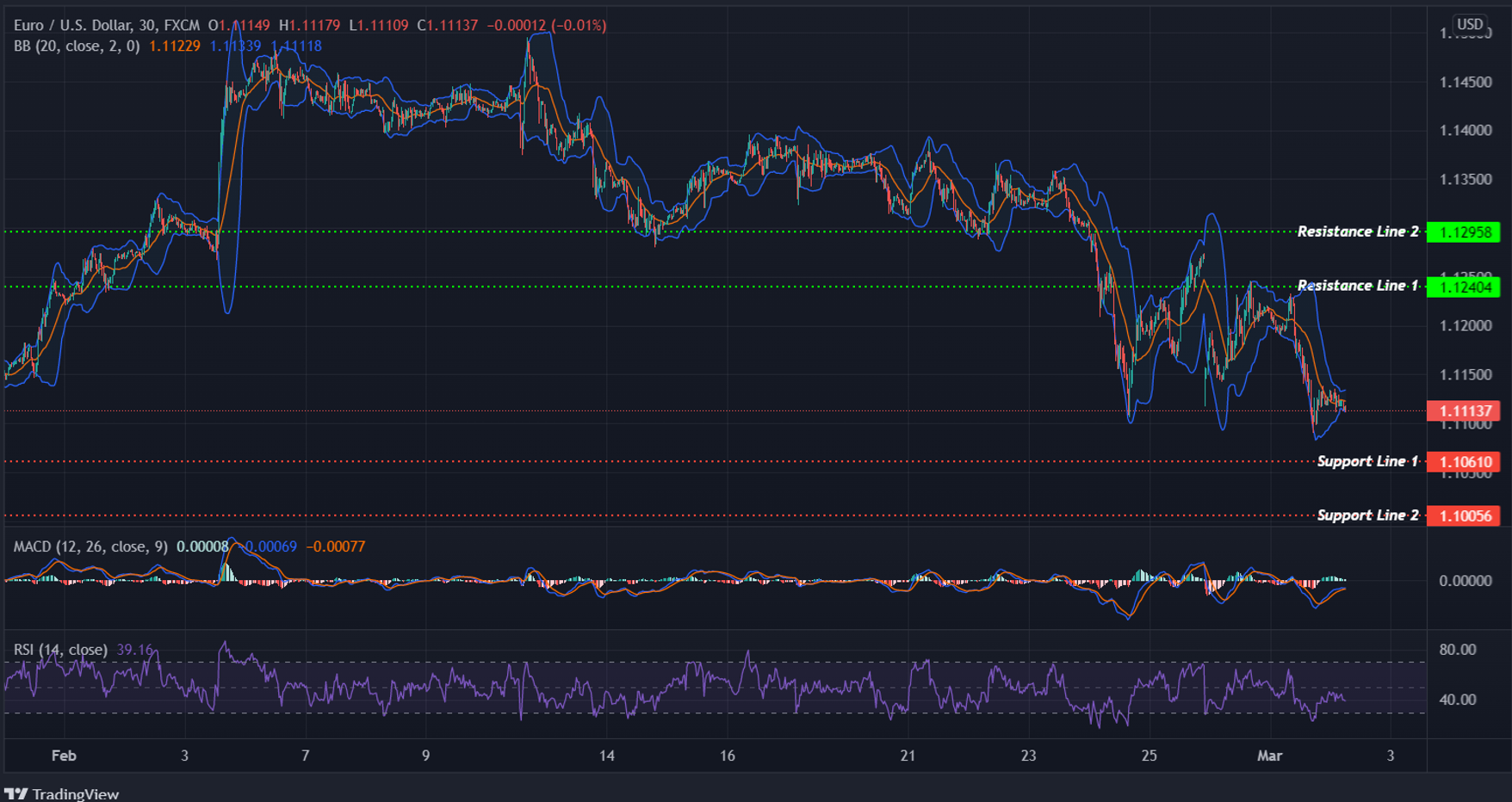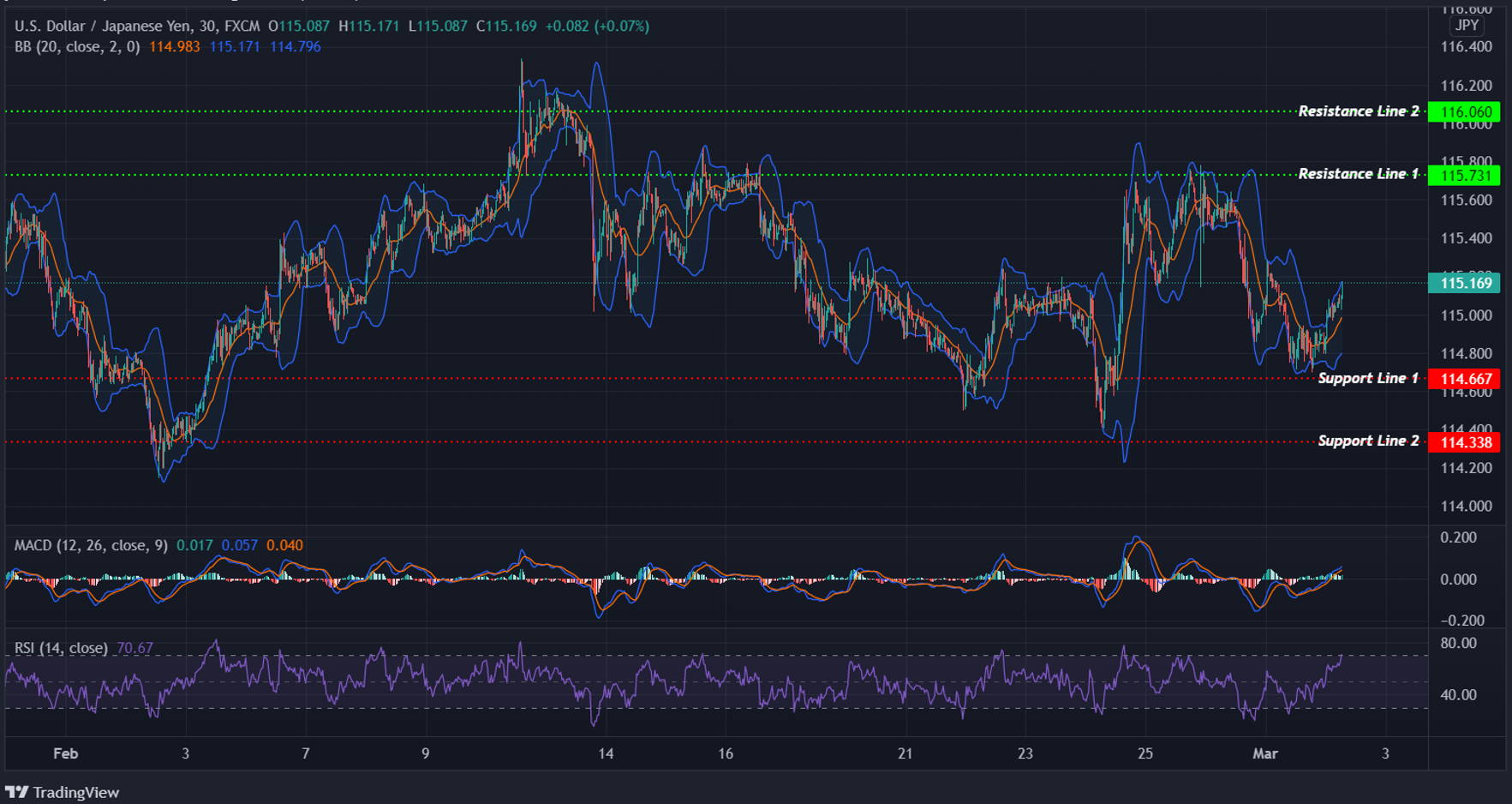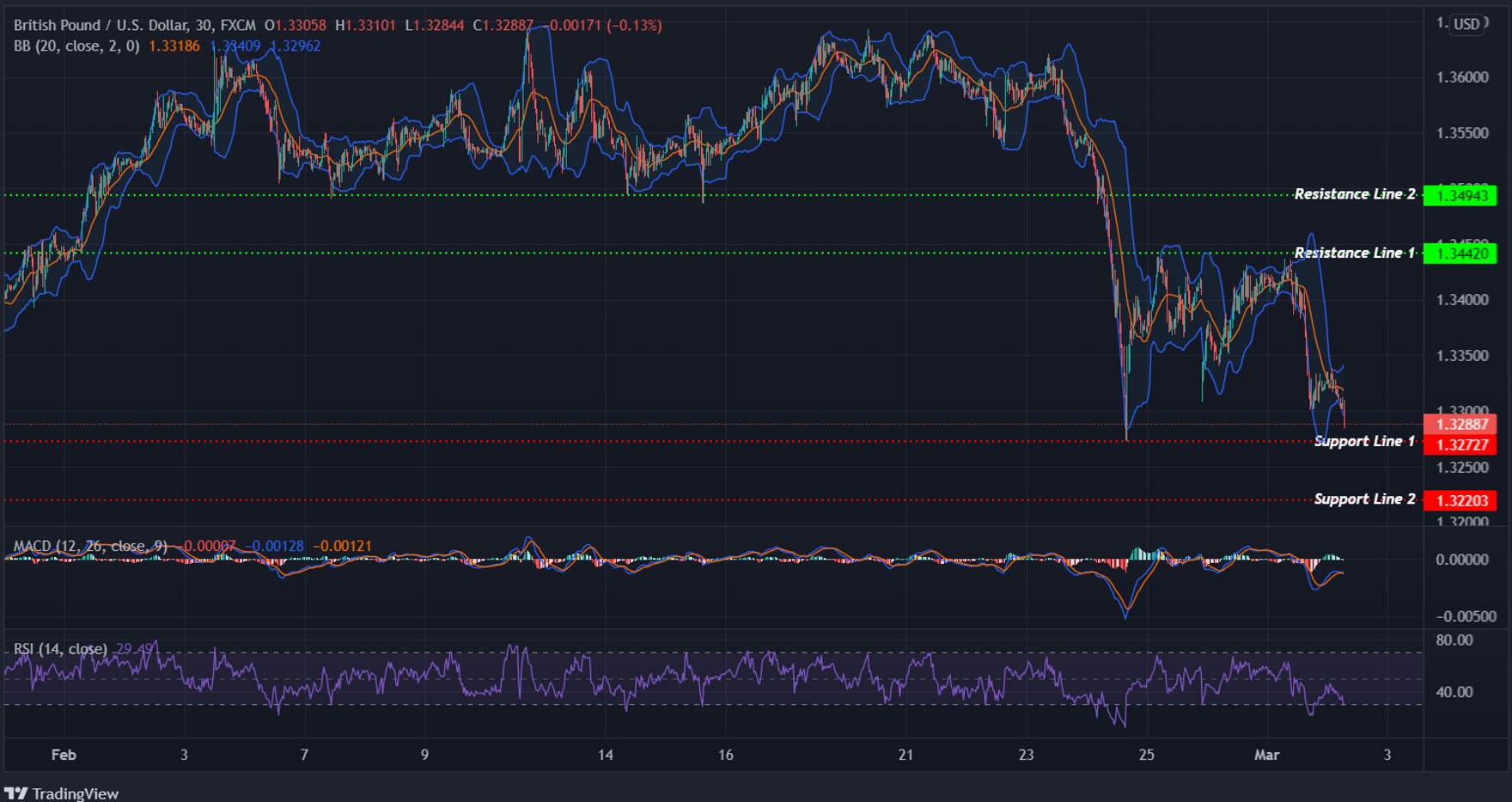INTRADAY TECHNICAL ANALYSIS 2 MARCH (observation as of 07:00 UTC)
[EURUSD]
Important Levels to Watch for:
- Resistance line of 1.12404 and 1.12958.
- Support line of 1.10610 and 1.10056.
Commentary/ Reason:
The euro was at $1.11137, retreated for three consecutive days against the U.S. dollar on rising geopolitical tensions, hovering just above the 1-3/4 year low touched on Tuesday.
The dollar posted moderate gains as a sell-off in stocks boosted the liquidity demand for the dollar. In addition, Tuesday’s U.S. economic data also was better than expected and bullish for the dollar.
The rebound in the U.S. Treasury yield on Wednesday also supported the dollar, after dropping to 8-week lows on Tuesday.
Risk-off mode continued to prevail as the Russian advance on Ukraine is set to intensify and wreak havoc on the Eurozone economy.
Tuesday comments from ECB Governing Council member Kazaks also were negative for EUR/USD as he said, "inflation will most likely remain higher than initially thought, and of course, these restrictions and higher prices will decrease economic growth."
The EUR/USD pair continues to test a recent low and a break appears to be forming, as heavy selling activity in yesterday’s trading took the pair back to the support line. The break may not be sustained however, looking at momentum indicators. RSI is fast approaching oversold conditions.
The macroeconomic calendar will include updates on US inflation and employment this week.

[USDCHF]
Important Levels to Watch for:
- Resistance line of 0.92163 and 0.92398.
- Support line of 0.91403 and 0.91168.
Commentary/ Reason:
The greenback was slightly higher, traded at 0.91895 franc on Wednesday, after rebounded from yesterday’s 1-week low.
Heightened nervousness on the latest developments around Ukraine kept the pair volatile, with the safe-haven currencies are expected to be in high demand.
The USD/CHF pair approached the target at 0.9140 before bounced bullishly to test the first key resistance 0.9216 and breaching that is followed by 0.9239 levels and holding above them.
Alternatively, accompanied by stochastic loss to the positive momentum, waiting to resume the negative trades to touch the 0.9140 support line, and breaking it will push the price to 0.9116 as a next negative station.

[USDJPY]
Important Levels to Watch for Today:
- Resistance line of 115.731 and 116.060.
- Support line of 114.667 and 114.338.
Commentary/ Reason:
The dollar was also stronger against the yen, up 0.26% at 115.169.
The rebound in the U.S. Treasury yield on Wednesday supported the dollar, after it slipped to an 8-week lows overnight.
The dollar also gains as a sell-off in stocks boosted the liquidity demand for the dollar.
The pair was put in a mixed performance as traders try to decide if the escalation of the war between Russia and Ukraine and the imposition of harsh sanctions on Russia by Western countries will drive risk-on or risk-off sentiment.
USD/JPY price action has stalled at the trendline which has been a key support area containing bearish moves since September 2021. Small-bodied candles indicate indecision in the pair, with neither buyers nor sellers having the appetite to drive price action.
That said, the quote’s weakness below 114.667 could easily renew the weekly low, while any further downside will be challenged by late February’s bottom surrounding 114.23.
Meanwhile, a highlight at 115.73 remains as a tough nut to crack for the USD/JPY bulls.

[GBPUSD]
Important Levels to Watch for:
- Resistance line of 1.34420 and 1.34943.
- Support line of 1.32727 and 1.32203.
Commentary/ Reason:
Sterling was pressed lower against the dollar on Wednesday, as it retreated to approach toward a 1-month low recorded last Thursday. The pair was last down 0.22% to $1.32887.
The dollar maintained its strength as investors sought shelter in safe-haven currencies as the outcome of the conflict between Russia and the Ukraine remains unprecedented.
Russian troops are approaching the capital Kyiv on the sixth day of Russia’s invasion of its neighbor.
Currency traders are trying to assess how the escalation of tensions and its economic impact might alter the Bank of England’s rate hike path in the near term, with money markets currently pricing in a 25-basis point rate increase from the BoE in March.















